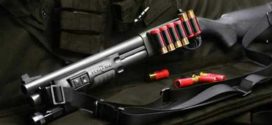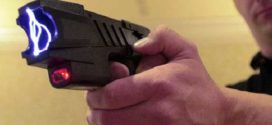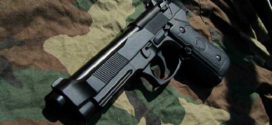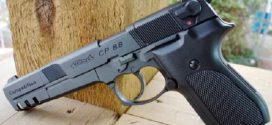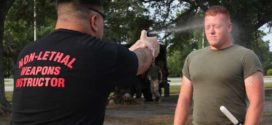Authors: Evgeny Zaitsev, senior specialist, Vladimir Nartsev, general director of Avangard LLC .
One day you may need body armor. Some need to protect themselves from difficult business competitors, others from a jealous husband, and others just want to return home late at night without fear. But it is important to understand that body armor will not save a life if it is not fitted correctly. The price of a mistake is too high - that's why you need to take into account every nuance.
Content
The choice of body armor: the main criteria
Choosing options for protection, you need to proceed from the threat. It is one thing for a person who has a fight with a neighbor (and the neighbor has a hunting rifle), and quite another for a businessman who has reason to be afraid of competitors. That is why the first question to ask yourself when choosing body armor is what it should protect against. The class of ammunition will depend on the answer, which means weight, material, thickness and other parameters. In addition, this will help determine which body armor to prefer - for hidden or outdoor wear.
So, when choosing a body armor, determine in advance:
- weight: are you ready for a load of 10-12 kg;
- material: aramid fiber is enough or something more durable is needed;
- thickness: will it be easy to hide the body armor under the clothes you plan to wear;
- hidden/external: whether to demonstrate the fact of protection.
Who are body armor suitable for?
For those who do not want to know about protection. There may be several reasons for this. Among them is the unwillingness to disturb loved ones and demonstrate body armor to colleagues, business partners and, in general, to everyone around.
But the main goal is the same: the attacker must not know that his victim is wearing armor. In this case, he will almost certainly prefer to take the simplest route and shoot several times in the torso. If the attacker knows about the defense, he will try to hit the head.
Most often, concealed wear vests are used by businessmen, bodyguards, as well as people who are engaged in the transportation of expensive goods on an informal basis, not wanting to attract too much attention to themselves. Less often, they are bought by private individuals - for example, football fans who fear attack amid sports disputes. Also, for example, they are provided to people who are in the witness protection program.
Class selection
The class of body armor for concealed wear depends on what kind of weapon the attacker can use.
If we are talking about a quarrel with a group of guys at the entrance or with an aggressive neighbor, it is unlikely that you will have to defend yourself against a more serious weapon than a traumatic pistol. In this case, a class Br1 bulletproof vest will suffice.
If protection is needed for a businessman who has an unpleasant situation with business partners, especially if it comes to direct threats and reports of an impending assassination attempt, light armor will not be enough. In this case, you need to analyze the situation and choose the appropriate option:
- Br2. Able to protect against a shot from a TT pistol - and therefore save a life in a common version of an assassination attempt, when a killer attacks a person in an entrance, shoots several times in the torso and quickly hides.
- Br3. It will save you from Yarygin pistol bullets with a bare steel core, as well as AK-74 and AKM bullets with a non-heat-strengthened steel core. Mostly use collection services.
- Br4. Stops a bullet with a heat-strengthened core from an AKM or AK-74 assault rifle. The weapons that such armor protects against are rarely used in Russia. But if the threat comes from a military or criminal authority, it is better to choose a bulletproof vest of this particular protection class.
- Br5. Relevant if there is a fear or accurate information that the killer will shoot from a sniper rifle. Such a weapon is rarely used - it is difficult to move around the city with it, it is not easy to hit the target with it, besides, the attacker will have to choose a suitable place for the shot, and this is also quite difficult to do. That is why bulletproof vests Br5 are used in exceptional cases.
Weight
Body armor Br1 and Br2 class weigh an average of 1.0 to 2.5 kg, Br5 - more than 9 kg. Wearing heavy armor is tiring, especially if you have to do it all the time. In addition, for some diseases, carrying weights every day for 8-10 hours can be dangerous. In such cases, it is recommended to buy two body armor and put on a reinforced one if it becomes known about an impending assassination attempt or if a trip to a dangerous place is ahead.
protection area
In the manufacture of armor Br1 and 2 classes use soft materials that fit the body. Due to this, such bulletproof vests cover not only the stomach and back, but also the collarbones and sides. Their advantage is a large area of protection.
Class Br5 models are made using composite ceramic panels. This is a hard material, it does not fit the body, so these vests protect only the back and chest. On average, their protection area is 2-2.5 times less than that of class 1-2 Br models.
If an attack with a knife or a shot from a TT, Nagant, PM, Stechkin automatic pistol is most likely, you need to choose a bulletproof vest Br2. In such a situation, it will protect better than a Br5 class model - not only will it stop a bullet and a knife, but it will also save if the attacker hits the side or collarbone.
Comfort to wear
Bulletproof vests Br1 and 2 classes fit well to the body, are distinguished by a small thickness (up to 1 cm). Such armor is easy to hide under a shirt or T-shirt, it can be worn in any weather, including in the heat.
Models Br 4-5 classes are heavier and thicker, they are more difficult to hide, so they have to be worn under a jacket, coat or windbreaker. Such armor is not suitable for use in the office or outdoors in hot weather.
Of course, the bulletproof vest Br5 class is much more reliable than Br2. But it is uncomfortable, it is hard to wear it every day. And there is another danger hidden in this: a person can put on reinforced armor for 4 days in a row, and on the fifth day, tired of it, leave it in the closet and end up without protection at all.
Versatility
The softness and flexibility of the materials used in the manufacture of bulletproof vests Br1 and 2 classes allow you to adjust the product to any figure. It is this armor that is recommended for women with large breasts.
What is the result?
When choosing a class of body armor, you need to take into account both the weapon that is most likely to be used and the likelihood of an attack. In most cases, it is better to purchase soft, lightweight body armor that can be worn all the time than heavy armor that a person will get tired of in a few days.
If you need body armor for all occasions
There are situations when you need to protect yourself from different threats. Most often, in such cases, they buy two body armor: light for everyday wear and reinforced for emergencies. If necessary, they can be combined. For example, put on two body armor for a trip around the city, and in the office take off the reinforced one and stay in a light fabric one.
You can also buy a set of body armor. It includes panels 1-2 and 5 classes. Light version can be used every day. To strengthen the body armor, it is enough to add composite armor elements to the design. This can be done quickly, which is especially important if information has been received about an assassination attempt that should occur in the next few hours or even minutes.
Domestic or imported?
Let's not keep the intrigue and answer immediately - domestic. And that's why.
Bulletproof vests are made according to state standards. In most countries of the world, the American NIJ standard is used. But not in Russia - in our country, armored clothing manufacturers are guided by GOST R 50744-95.
American and Russian standards are very different. One of the most significant differences is in the allowable amount of armor injury. In America, if after hitting a bulletproof vest, from which it should protect, a deflection of 44 mm remains on the “body” (test block), the product is recognized as meeting the standard and allowed for sale. But with such values, the probability of death of a person is 10%.
Why is that? Firstly, the calculation on the emergency services, who must arrive at the scene within a few minutes and save the victim. Secondly, the standard is made so low that the manufacturing company is not sued if a person dies. The deceased will simply be written off in the "10%".
Russian GOST is much tougher: the amount of deflection should not be more than 21 mm. With such a deflection, only a hematoma will remain on the body of a person who wears a bulletproof vest. This means that after an attack, he will be able to quickly rise to his feet, defend himself, and run away.
There is a stereotype that American bulletproof vests are better because they are lighter and thinner. In fact, their weight and thickness are less than those of Russian ones, just because of the difference in GOST and, accordingly, less reliability. Ease in this case is not an advantage.
One more point must be taken into account. The characteristics of Russian and American weapons, speed, bullet weight differ significantly. This factor is taken into account by manufacturers. The NIJ standards are developed taking into account the characteristics of American weapons and ammunition, the domestic GOST - Russian weapons and ammunition.
If you are planning a trip to America, it makes sense to buy foreign-made body armor. But if you need protection in Russia, it is better to choose armor designed for a shot from a TT or other weapons common in our country. In this case, there is simply no point in buying vests from foreign manufacturers.
About the choice of manufacturers: look at design and convenience
An important point: manufacturers use mostly the same materials, moreover, the choice of material indicates the protection class, but not the quality of the product. That is why, when choosing between different manufacturers and models, you need to pay attention not to materials, but to design and construction: which body armor will be easier to hide under a shirt or T-shirt, which one has more protection area. It is also worth considering the features of adjustment, the convenience of fitting to the figure.
materials
In the manufacture of modern bulletproof vests, various materials are used - the choice depends on the protection class.
Aramid fiber
Protection class - Br1 and in rare cases Br2. This material is available under several brand names, including Kevlar, Twaron and Rusar. Aramid fiber is soft and flexible, but strong enough to protect against a shot from a traumatic pistol. In bulletproof vests of higher protection classes, this material is used only as a basis, since it is insufficient by itself.
For example, in order to provide protection according to the standards of class Br3, it will be necessary to make a body armor about 20 cm thick from aramid fiber.
Ultra High Modulus Polyethylene (UHMWPE)
Protection class - Br2. UHMWPE has replaced aramid fiber, which was previously used in the manufacture of body armor of this class. Even a thin, up to 1 cm, layer of material is able to protect against a shot from a TT at close range. At the same time, ultra-high-modulus polyethylene is very flexible, so the body armor made from it is easy to fit and hide under a shirt made of light fabric.
Pressed UHMWPE
Protection class - Br3. The strength of this material is very high. In addition, it is lightweight and suitable for long-term wear. But he also has disadvantages. The thickness of the material is about 2 cm, so it is not easy to hide a bulletproof vest made of pressed UHMWPE under clothes. In addition, it is quite expensive (the average cost of a product is about 50-60 thousand rubles). That is why now bulletproof vests made of pressed UHMWPE are mainly used by collectors, moreover, for outdoor, and not for hidden wear. Moreover, due to the high cost, almost all banks refused to produce - at the moment, such body armor for collectors is bought mainly by Sberbank.
Bronestal. Protection class - Br3 and Br4. Thin, cheap, but at the same time very heavy material - usually the weight of the vest exceeds 10 kg. Such armor is used in collection services.
Composite ceramic panels. Protection class - Br4 and Br5. This material is lighter and stronger than bulletproof steel. However, in Russia, products with composite ceramic panels are expensive, since they are not yet very widespread (only the army and special forces can afford and buy).
When choosing materials in each protection class, you need to pay attention to key characteristics - weight, thickness and price. In this case, the last parameter should not be decisive - you should not save on your security.
Of course, body armor is not able to protect against any threat. But he can save the life of a person who is attacked with a knife or a firearm - and this is already a lot. Many people could have survived if they had paid more attention to their protection. No need to be a hero if you fear for your life. Protect yourself.
Hello, I am Alexander, the mastermind behind the blog.
In terms of career and free time, I connected my life with the forest. How else, when you live in Karelia! In this blog, I am responsible for the hunting, hiking and equipment sections. Welcome to my world!
 Survival Lessons Tips for the survivalist, fisherman and hunter
Survival Lessons Tips for the survivalist, fisherman and hunter

